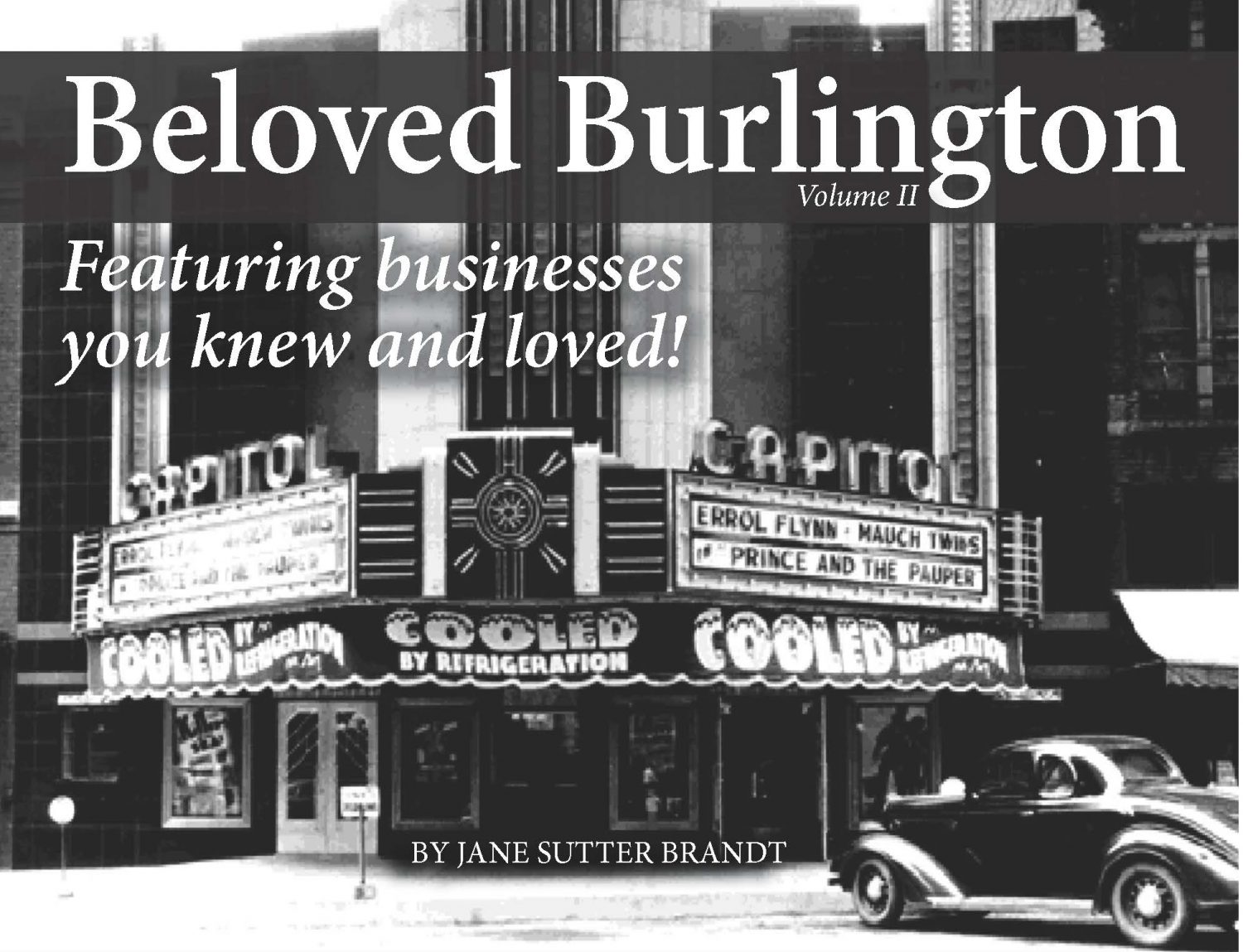
You never know how something you write will resonate with a reader. Such was the case recently when I gave a copy of my book, Sutter’s Sodas Satisfy: A Memoir of 90 Years of Sutter Drug Co. , to a former colleague.
My husband, Gary, and I, were driving back to our home in Rochester, N.Y., from Florida, where we had a spent a few months. At the last minute, we decided to stop overnight in Winchester, Va., which just happens to be where my good friend, Maria Hileman Montgomery lives. She is a former Democrat and Chronicle colleague of mine, and now is the managing editor of the The Winchester Star newspaper. We were lucky that Maria and her husband, Roger, were available for dinner on such short notice. We had a great time catching up, especially since Maria and I had not seen each other in several years. I gave her a copy of my book, never dreaming that even though she had not visited Burlington, Iowa, let alone Sutter Drug, the story would touch a chord for her. She wrote this touching column, and it was published in The Winchester Star.
Localizing the universal
Before the 1960s and ‘70s, when people started flocking to strip malls and chain restaurants and, more recently, to “virtual” internet communities like Facebook, they often met at lunch counters in drug stores, diners and five-and-dimes.
My own parents met in 1947 in Washington, D.C. when he was a soda jerk and she was a customer at People’s drug store across 10th Street from Ford’s Theater.
One of my earliest and fondest childhood memories is of ordering mouth-watering buttered toast and “sunny side up” eggs on Sunday mornings in the late 1950s with my mother at a lunch counter in downtown Staunton after Mass at St. Francis of Assisi church.
A friend and former newspaper colleague of mine from Rochester, N.Y., Jane Sutter Brandt, has just published a book of memoirs about her family’s 90 years in the pharmacy business in Burlington, Iowa. Her father, grandfather and great-grandfather operated the Sutter Drug Co. in several locations in that city from 1902 to 1993, and the lunch counter was an intrinsic part of the business.
When she and her husband, Gary, stopped in Winchester and had dinner with us a couple weeks ago on their way back to Rochester from Florida, she gave me a signed copy of her self-published book “Sutter’s Sodas Satisfy.”
I started to read it this past weekend more out of devotion to Jane, who was managing editor of the Democrat and Chronicle during my half dozen years as metro editor there, than out of any real interest in the topic.
But after burying myself in the book for an afternoon, I came away impressed with how careful attention to historical detail and strong narrative writing can uncover the universal nature of so much of human experience.
While Sutter’s was a particularly local institution, I found threads of informational nostalgia that resonated in surprising ways with me. Her explanation of how Sutter’s carried Cara Nome cosmetics, for instance, took me back to conversations between my mother and father in the 1950s and ‘60s, when he would ask her what she wanted for her birthday or anniversary.
“Cara Nome,” she’d reply, rolling the ‘r’ expressively and lifting her eyes heavenward. I haven’t heard the phrase in years.
As Jane explains in her book, Cara Nome was a popular Rexall brand for high-end cosmetics. Her great-grandfather, Joseph R. Sutter, became a “Rexall agent” in 1907, meaning he held an exclusive franchise to sell the products in Burlington and West Burlington.
Rexall distributors displayed a distinctive bright orange and navy blue sign, and it was the name brand for products sold by United Drug Co. of New Jersey. Other Rexall products included Super Plenamin vitamins and Liggett’s $50,000 chocolates.
The word “Rexall” meant “king of all,” and was probably an allusion to the Rx used in prescriptions. Customers will recall the popular semi-annual Rexall One Cent sale when you could get a second item for a penny if you bought one.
Photos in the book show customers lined up the whole way up the city block and cramming the newly air-conditioned store and soda fountain when Sutter’s reopened after remodeling in 1949.
The photos show not only Cara Nome products and Kodak’s new Hawkeye cameras, but the gleaming “full-vision windows” on the display cases and the modern fluorescent lights.
In a chapter headed “Changing Times,” Jane describes the changes that came in the 1960s with the advent of chain pharmacies, costly prescription drugs and third-party prescriptions such as Medicaid. The death knell sounded in the 1980s when insurance companies forced customers to buy prescriptions from certain pharmacies and big-box retailers added pharmacies to their stores.
It is hard, in the end, not to bemoan the passing of the era of the independent drug store when you view it through the prism of such a long-time family business.

